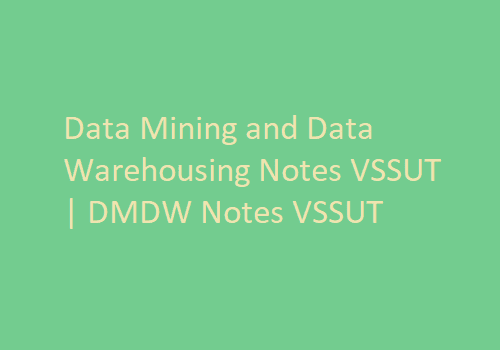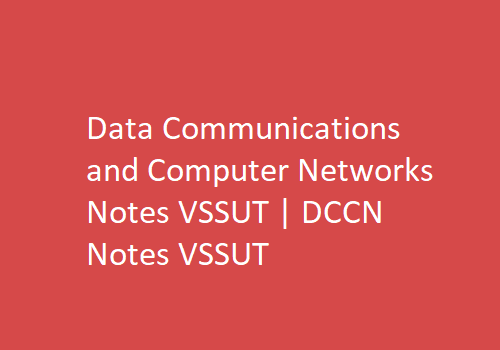Control System Engineering – II Notes VSSUT – CSE- II Notes VSSUT of Total Complete Notes
Please find the download links of Control System Engineering – II Notes VSSUT | CSE- II Notes VSSUT are listed below:
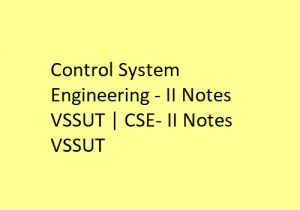
Control System Engineering – II Notes VSSUT – CSE- II Notes VSSUT of Total Complete Notes
Overview Control System Engineering – II Notes
Control System Engineering is a fundamental discipline in engineering that deals with the behavior of dynamic systems. It plays a crucial role in the design and analysis of systems that maintain desired outputs despite changes in inputs. The second part of this subject, Control System Engineering – II, dives deeper into advanced topics, building upon the basics covered in the first part.
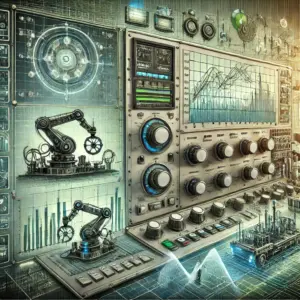
Module 1: State Variable Analysis and Design
State Variables and State Model
State variables are a set of variables that describe the state of a system at any given time. They form the foundation for state-space analysis, which is a powerful method for analyzing and designing control systems.
State Models for Linear Continuous-Time Systems
This section covers the development of state models for linear continuous-time systems, providing a framework for their analysis and design.
State Variables and Linear Discrete-Time Systems
Here, we extend the state-space concepts to linear discrete-time systems, which are crucial for digital control systems.
Diagonalization
Diagonalization simplifies the analysis of linear systems by transforming the state-space model into a diagonal form.
Concepts of State
Understanding the concept of state is fundamental to state-space analysis, as it encompasses all the information necessary to describe a system’s behavior.
Solution of State Equations
The solution of state equations provides insight into the system’s behavior over time, given initial conditions and inputs.
Concepts of Controllability and Observability
Controllability and observability are key properties that determine whether a system can be controlled or observed entirely from its inputs and outputs.
Pole Placement by State Feedback
Pole placement is a method for designing controllers that place the system’s poles in desired locations for improved performance.
Observer-Based State Feedback Control
Observer-based control uses an observer to estimate the state variables, enabling state feedback control in systems where not all states are measurable.
Module 2: Introduction to Design
The Design Problem
The design problem involves creating a control system that meets specified performance criteria.
Preliminary Considerations of Classical Design
Classical design methods provide a foundation for understanding more advanced control system design techniques.
Realization of Basic Compensators
Compensators are used to modify the behavior of a control system, and this section covers the realization of basic types.
Cascade Compensation in Time Domain
Cascade compensation involves adding compensators in series with the controller to reshape the root locus and achieve desired performance.
Cascade Compensation in Frequency Domain
This section covers reshaping the Bode plot through cascade compensation to improve system performance in the frequency domain.
Introduction to Feedback Compensation
Feedback compensation involves using feedback loops to enhance the stability and performance of control systems.
Robust Control System Design
Robust control system design ensures that the system performs well under a variety of conditions and uncertainties.
Digital Control Systems: Advantages and Disadvantages
Digital control systems have specific advantages and disadvantages compared to analog systems, which are explored in this section.
Representation of Sampled Process
The representation of sampled processes is essential for analyzing and designing digital control systems.
The z-Transform
The z-transform is a mathematical tool used to analyze discrete-time signals and systems.
The z-Transfer Function
The z-transfer function describes the input-output relationship of a discrete-time system in the z-domain.
Module 3: Nonlinear Systems
Introduction
Nonlinear systems exhibit behavior that cannot be captured by linear models, making their analysis and control more complex.
Common Physical Non-Linearities
This section covers common physical non-linearities encountered in engineering systems, such as saturation and dead zones.
The Phase-Plane Method
The phase-plane method is a graphical tool used to analyze the behavior of nonlinear systems.
Stability of Nonlinear Systems
Stability analysis of nonlinear systems is crucial for ensuring that the system behaves as desired under various conditions.
Construction of Phase-Trajectories
Constructing phase-trajectories helps visualize the behavior of nonlinear systems in the phase plane.
The Describing Function Method
The describing function method is an approximate analytical technique for analyzing nonlinear systems.
Stability Analysis by Describing Function Method
This section covers the application of the describing function method to stability analysis.
Jump Resonance
Jump resonance is a phenomenon in nonlinear systems where the response can abruptly change due to small changes in input amplitude.
Signal Stabilization
Signal stabilization techniques are used to mitigate undesirable effects in nonlinear systems.
Module 4: Optimal Control Systems
Parameter Optimization
Parameter optimization involves adjusting system parameters to achieve the best performance according to a specified criterion.
Servomechanisms
Servomechanisms are feedback control systems used to control the position or speed of mechanical devices.
Optimal Control Problems
Optimal control problems involve finding a control law that minimizes a cost function while satisfying system dynamics.
State Variable Approach
The state variable approach is used to formulate and solve optimal control problems.
The State Regulator Problem
The state regulator problem involves designing a control law that regulates the state of the system to the desired value.
The Infinite-Time Regulator Problem
This section covers the infinite-time regulator problem, where the control law is designed for an infinite time horizon.
The Output Regulator and the Tracking Problems
The output regulator and tracking problems involve designing control laws that ensure the output follows a desired trajectory.
Parameter Optimization: Regulators
This section covers the optimization of parameters for regulatory control systems.
Introduction to Adaptive Control
Adaptive control systems adjust their parameters in real-time to cope with changes in system dynamics.
Liapunov’s Stability Analysis
Liapunov’s stability analysis provides a framework for assessing the stability of nonlinear systems.
Control System Engineering- II Notes PDF
The Control System Engineering – II notes PDF is an essential resource for students studying this subject. It provides comprehensive coverage of all the topics included in the syllabus, structured in an easy-to-follow manner. These notes are invaluable for both understanding the material and preparing for exams.
Topics Covered in Control System Engineering – II Notes
The CSE- II notes cover a wide range of topics, including:
- State Variable Analysis and Design
- Classical and Modern Control Design
- Nonlinear Systems
- Optimal Control Systems
Links to Download Control System Engineering – II Notes PDF
Here are the links to download the CSE- II notes:
- Module 1: State Variable Analysis and Design
- Module 2: Introduction to Design
- Module 3: Nonlinear Systems
- Module 4: Optimal Control Systems
- Complete Notes
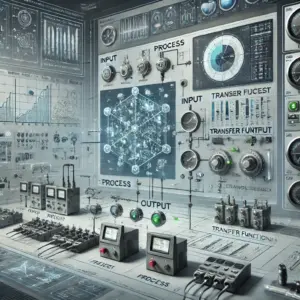
Benefits of Free Control System Engineering- II Notes PDF
The free handwritten notes PDF provides a concise and clear presentation of the material, making it easier to grasp complex concepts. These notes are particularly useful for quick revision and exam preparation.
DOWNLOAD NOW
Why Choose Smartzworld for Downloading Control System Engineering – II Notes
Smartzworld offers reliable and easy access to a wide range of academic notes, including the CSE- II notes. Their platform ensures that you get high-quality, accurate, and up-to-date study materials.
Books and Reference Materials
- K. Ogata, “Modem Control Engineering”, PHI.
- I.J. Nagrath, M. Gopal, “Control Systems Engineering”, New Age International Publishers.
- J.J. Distefano, III, A.R. Stubberud, I.J. Williams, “Feedback and Control Systems”, TMH.
- K. Ogata, “Discrete Time Control System”, Pearson Education.
FAQs
Q1. Where can I download the Control System Engineering – II Notes PDF?
You can download the notes from the provided links for each unit or the complete set from Smartzworld.
Q2. How to download the Control System Engineering- II Notes PDF?
Simply click on the provided links for the modules or the complete set to download the PDF files.
Q3. How many modules are covered in the Control System Engineering – II Notes PDF?
The notes cover four modules: State Variable Analysis and Design, Introduction to Design, Nonlinear Systems, and Optimal Control Systems.
Q4. What topics are covered in the Control System Engineering- II Notes PDF?
The notes cover a wide range of topics, including state variable analysis, classical and modern control design, nonlinear systems, and optimal control systems.
Q5. Where can I get the complete CSE- II Handwritten Notes PDF free download?
You can get the complete handwritten notes PDF for free from Smartzworld.
Q6. How to download the CSE- II Handwritten Notes PDF?
Click on the provided download links to access and download the handwritten notes PDF.
Q7. How to download free Control System Engineering – II Notes PDF?
Access the provided links on Smartzworld to download the free CSE- II notes PDF.
I hope you are having a wonderful day! I have a small favor to ask. I’m aiming to rank in the top 10 on the ChatGPT store, and I can’t do it without your amazing support. Could you please use my GPT [https://bit.ly/GPT_Store] and leave some feedback? Your positive reviews would mean the world to me and help me achieve my goal. Additionally, please bookmark my GPT for easy access in the future. Thank you so much for your kindness and support! Warm regards

